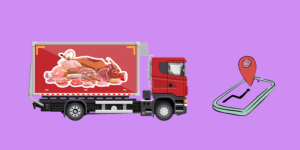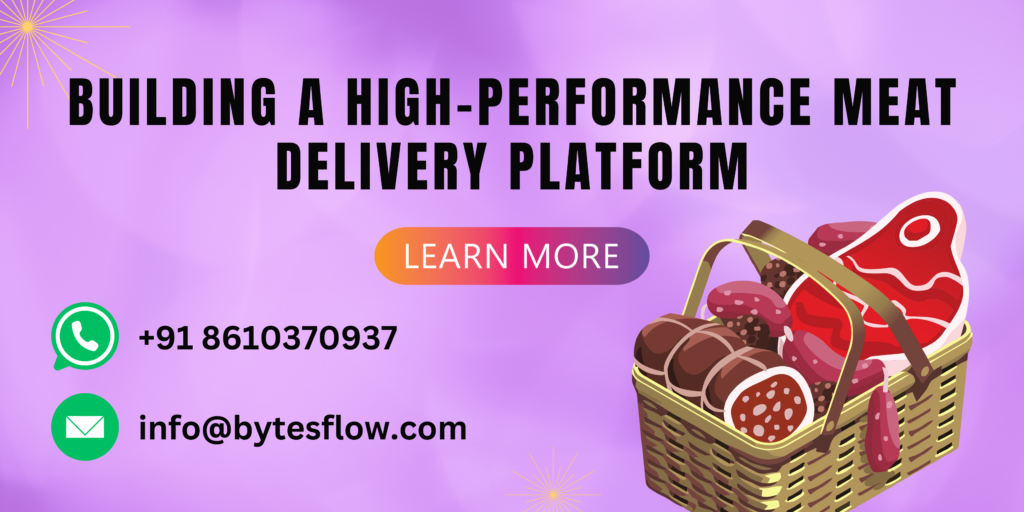The meat delivery industry is evolving rapidly, driven by the increasing demand for fresh, high-quality meat delivered straight to consumers’ doorsteps. To meet this demand, businesses need scalable on-demand meat delivery software that ensures efficiency, seamless operations, and long-term growth. In this guide, we will cover essential tips and best practices for a robust meat delivery software development that caters to both business needs and user expectations.
Key Features of a Scalable On-Demand Meat Delivery Software
1. User-Friendly Customer App
A well-designed customer app is crucial for a smooth user experience. It should include:
- Easy registration and login via email, phone number, or social media.
- Advanced search filters for meat categories, pricing, and delivery options.
- Real-time tracking to monitor order status and estimated delivery times.
- Secure multiple payment options (credit/debit cards, digital wallets, and COD).
- Personalized recommendations based on order history and preferences.
2. Efficient Vendor and Admin Panel
A scalable on-demand meat delivery software should provide robust vendor and admin panels to manage operations efficiently:
- Order management system to track and process orders seamlessly.
- Inventory management to monitor stock levels and avoid shortages.
- Analytics dashboard for insights on sales trends and customer behavior.
- Automated notifications for new orders, low stock, and customer inquiries.
3. Optimized Delivery Partner App
To ensure timely and hassle-free deliveries, your meat delivery software script must include with:
- Route optimization for faster deliveries.
- Earnings and performance tracking for delivery agents.
- Live chat support to assist with order-related queries.
Best Practices for Scalability in On-Demand Meat Delivery Software

1. Choose a Robust Tech Stack
Selecting the right technology stack ensures performance and scalability. Consider:
- Cloud-based architecture (AWS, Google Cloud) for flexible scalability.
- Microservices approach to enhance software maintainability and speed.
- Efficient database management (MySQL, MongoDB) for handling large volumes of data.
2. Implement AI and Automation
AI-powered features can enhance efficiency and user experience:
- Smart inventory management using AI predictions for stock replenishment.
- Chatbots for customer support to handle inquiries and FAQs.
- AI-driven delivery route optimization to reduce delivery times.
3. Ensure High Security and Compliance
Security is vital in on-demand meat delivery software due to sensitive customer data and transactions:
- SSL encryption to protect user information.
- Compliance with local food safety and delivery regulations.
- Fraud prevention mechanisms like OTP verification and secure payment gateways.
4. Optimize for Performance and Speed
A scalable on-demand meat delivery software must handle high traffic efficiently:
- CDN (Content Delivery Network) to reduce load times.
- Load balancing techniques to distribute traffic evenly.
- Regular performance testing to identify and fix bottlenecks.
5. Seamless Third-Party Integrations
Enhance functionality by integrating with third-party services:
- Payment gateways like Stripe, PayPal, and Razorpay.
- GPS tracking APIs for accurate real-time tracking.
- Marketing automation tools to boost engagement and retention.
Optimizing On-Demand Meat Delivery Software for Scalability and Efficiency!
Building a scalable on-demand meat delivery software script requires a well-structured approach, robust technology, and a focus on user experience. By implementing the right features, AI-driven automation, security measures, and seamless integrations, businesses can develop a high-performing meat delivery solution that stands out in the competitive market. Prioritizing scalability ensures long-term growth, improved operational efficiency, and enhanced customer satisfaction.
